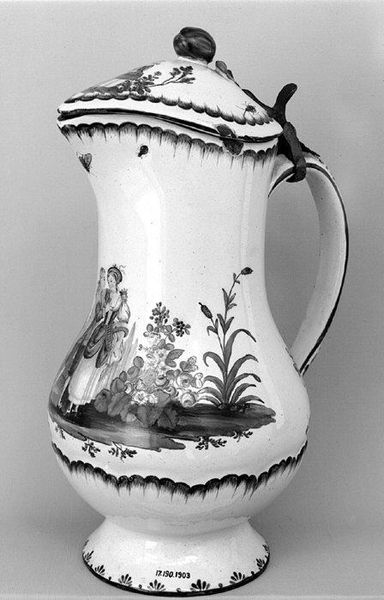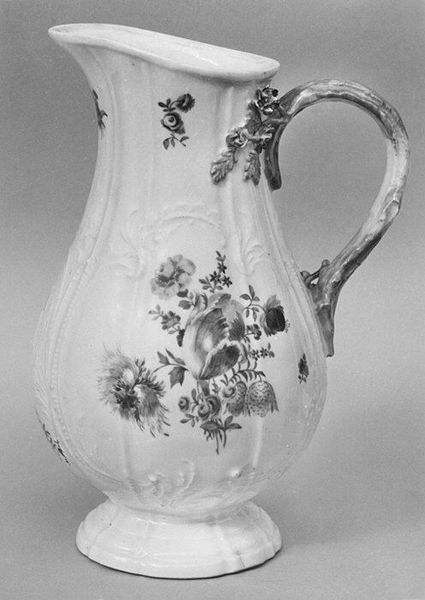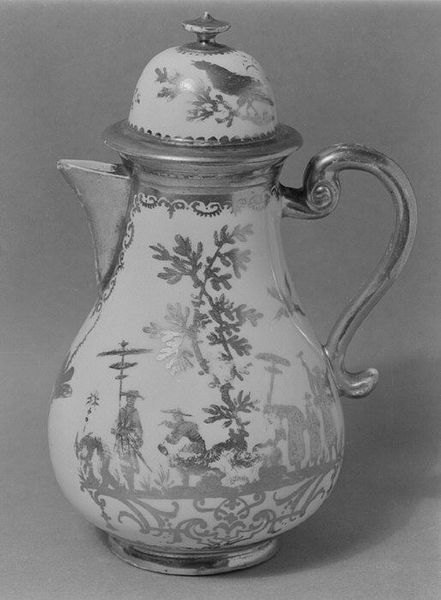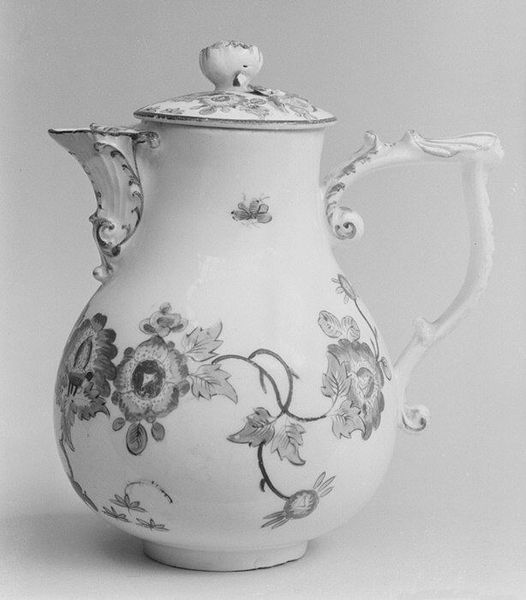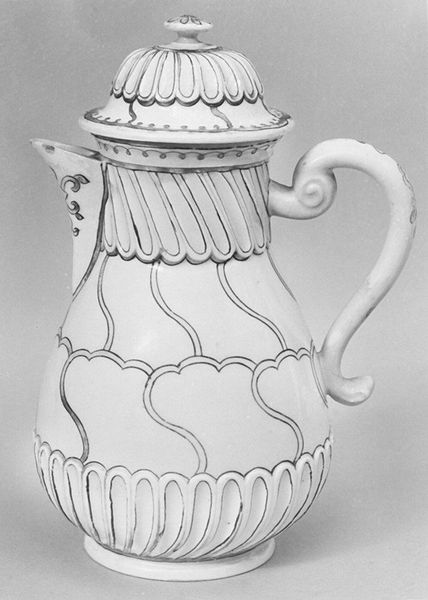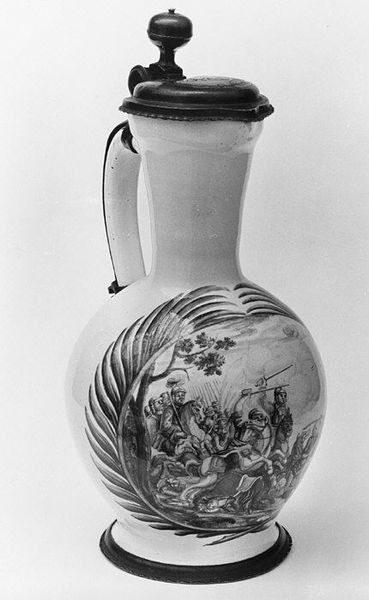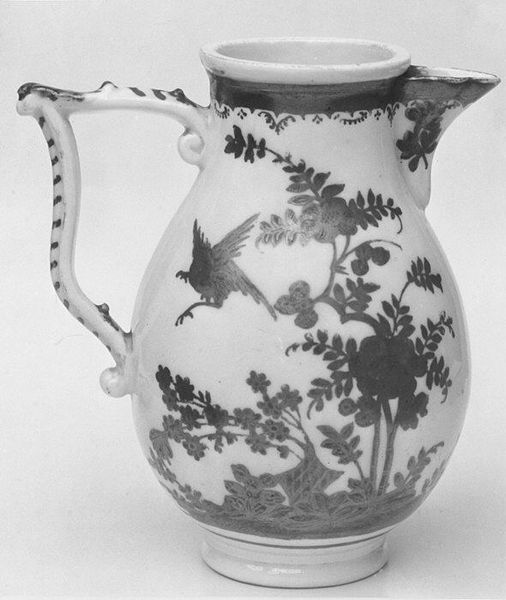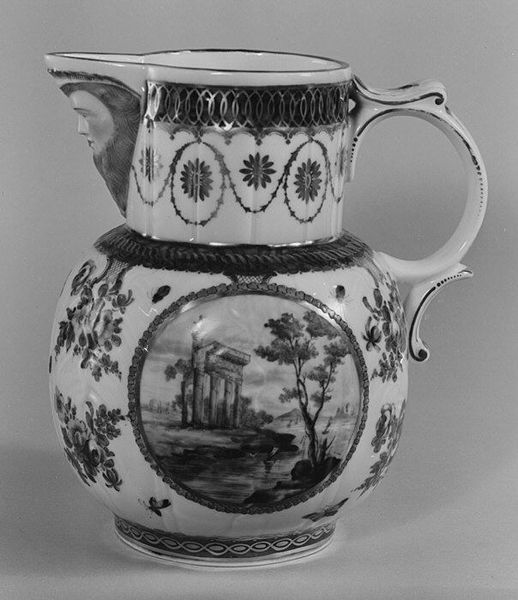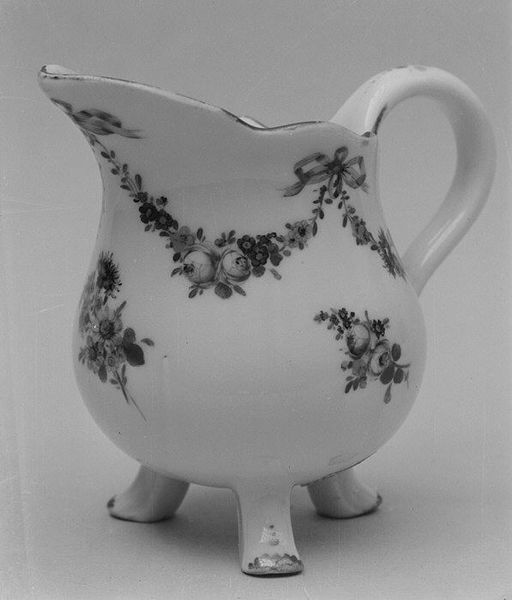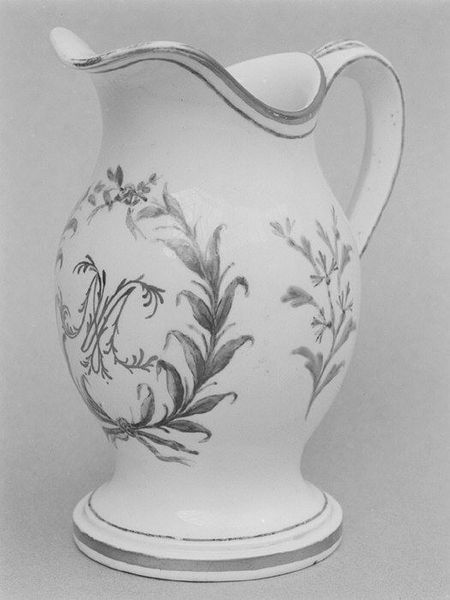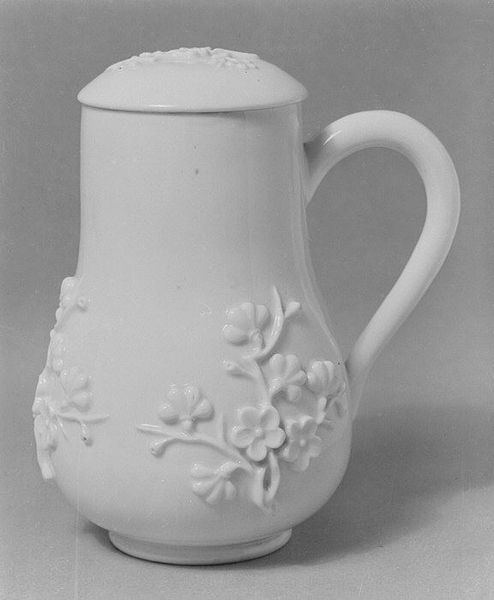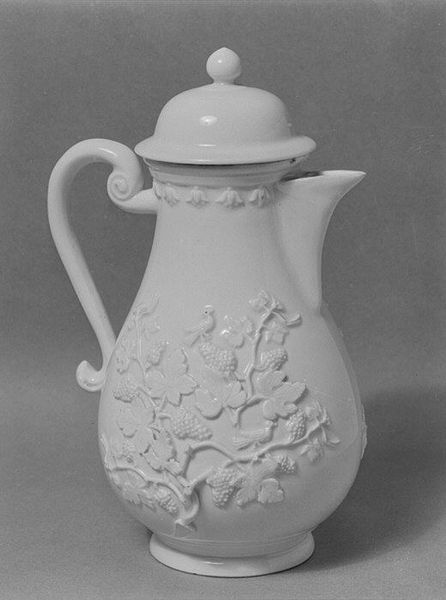
Dimensions: Height: 5 1/2 in. (14 cm)
Copyright: Public Domain
Curator: The milk pot before us, crafted by Tournai between 1765 and 1780, exemplifies Rococo style in decorative art. Fashioned from ceramic and porcelain, it’s part of the Metropolitan Museum of Art's collection. Editor: It has such a fragile, ephemeral beauty about it, doesn’t it? I imagine this gracing a table during some elite social gathering, maybe masking inequalities through sheer beauty. Curator: Rococo was indeed a style favored by the aristocracy, expressing elegance and ornamentation. Even something as utilitarian as a milk pot became a canvas for artistic expression, imbued with symbolic meaning through floral motifs and delicate design. Editor: Yes, I immediately connect these ornate details to notions of courtly love, the stylized rendering of nature, and the overall aesthetic being deployed in the service of power. Think of the gendered labour involved in the manufacturing process versus the delicate fingers that held it later. Curator: We might explore how porcelain itself held significance as a precious material, almost alchemical in its transformation from raw materials into something so refined. Consider too, the way this milk pot fits within the history of dining and domestic life, its curves suggesting comfort and belonging. Editor: It's also fascinating to consider what wasn’t depicted. These ornate surfaces and refined narratives often exclude the realities of labor and power dynamics, creating a selective image of pastoral idyll for its aristocratic owners. We should not divorce these art objects from the broader sociopolitical landscape of the era. Curator: Of course. The symbols presented are deliberate and demand critical understanding. Through close examination, the piece's impact isn't limited to its aesthetic beauty but serves as a marker of status, a container of ritual, and an expression of 18th-century aristocratic sensibility. Editor: Exactly. And understanding its function, context and silences gives voice to the complexities, revealing hidden structures. Curator: Indeed. This "Milk Pot", seemingly humble, prompts essential questions about the power structures that shape aesthetic values. Editor: A silent witness and an active participant to conversations about representation, labor, and social order, wouldn't you say?
Comments
No comments
Be the first to comment and join the conversation on the ultimate creative platform.
